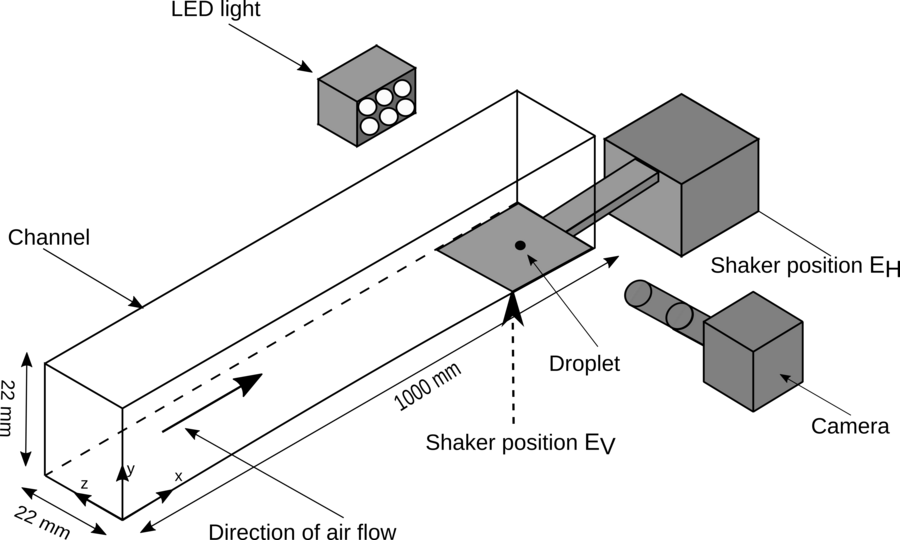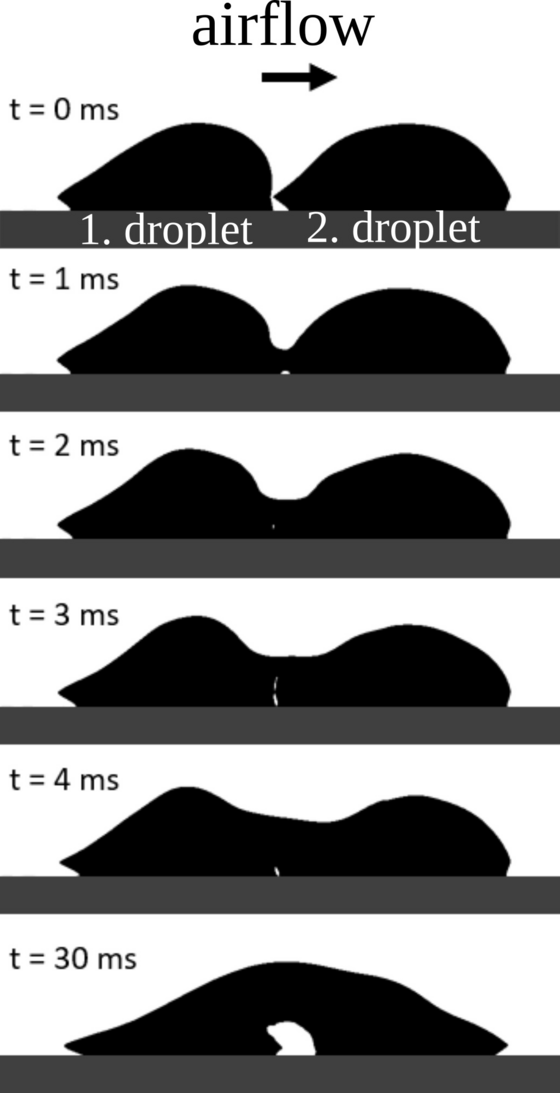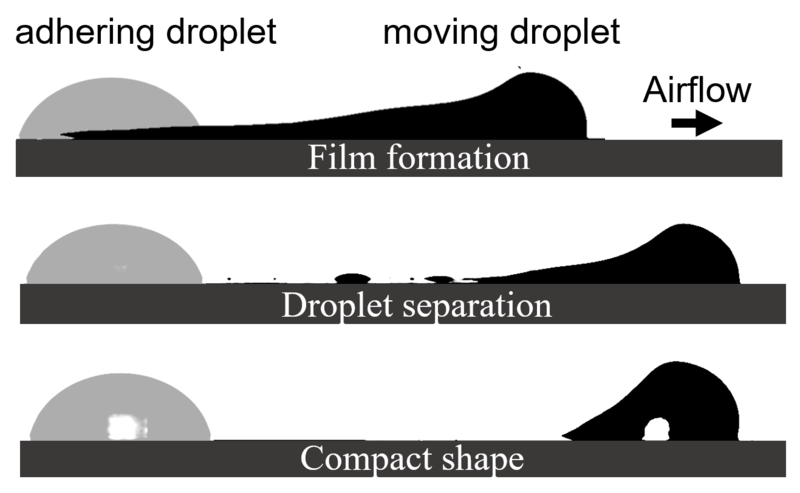Influence of aerodynamic and mechanical forces on droplet motion and separation

In many technical and scientific applications, for example in the fields of process engineering, heat transfer, and microfluidics, droplet wetting on solid surfaces is a complex phenomenon. Droplets may occur on surfaces of machines and apparatus due to condensation or liquid sprays. Often, there is an airflow over these surfaces, applying shear forces to the droplet. Under critical conditions, the initially adhering droplets start to move. In addition to the airflow, surface vibration or gravitation can also induce a movement. Often, the forces superimpose during the operating. It is known from experience, that droplets unexpectedly migrate to parts of the apparatus where they may lead to corrosion effects or electrical shortcuts. Therefore, it is important to understand the behavior of droplets under the effect of external forces in order to avoid the potential failures. However, droplet movement under external forces has not been studied systematically, especially from an experimental perspective. Some fundamental issues are still not understood for example the specific critical conditions for the droplet movement. Additionally, the prediction of droplet movement by means of numerical simulations is complex due to e.g. modeling of contact angle hysteresis, surface tension force and undesired damping of the inner flow of the droplet.

The goal of the project is to get fundamental experimental knowledge on hydrodynamic instabilities of adhering droplets by taking the underlying parameters that influence droplet behavior into account Droplet detachment, deformation and oscillation of adhering droplets effected by external forces shall be determined experimentally.
On basis of the results obtained, the field of research is extended to the Interaction of two droplets. The influences of the interactions on the motion behavior, i.e. the critical velocity at which a droplet starts to move, as well as droplet-droplet interactions (coalescence processes) will be investigated. In addition to varying the arrangement and droplet size, material and substance parameters are also varied.
The insights into the droplet behavior gained from the experiments will be used to perform numerical simulations and to further validate them. CFD simulations are performed using the Volume of Fluid (VOF) approach with the open source software OpenFOAM®.


